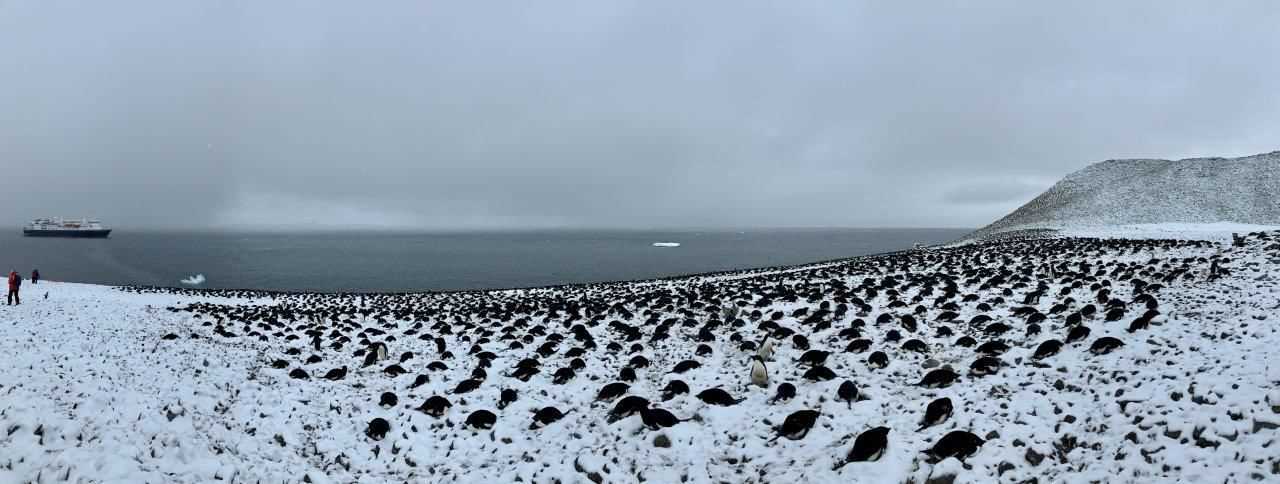We awoke this morning to lightly falling snow. National Geographic Explorer had sailed from an ice pack through the night to Paulet Island, a land of jutting volcanic mountains sprinkled with new snow. One hundred thousand pairs of black and white Adélie penguins populate the island, running and sliding throughout. At the end of a long hike, Weddell seals could be seen laying on beach rock as growler bergs, white and blue, floated by. Among the thousands of Adélie penguins, some Antarctic shags, also black and white, made us believe for a moment that penguins could fly.
Archeologist Carol Knott greeted us by a quite unique stone hut, which was held together with guano. It was built in 1903 by Norwegian sailors who hunkered down for the winter after their Antarctic expedition ship sank at the end of February that year. Captain Carl Anton Larsen and 19 of his companions (plus a cat), made Paulet their home for almost 10 months, during which they consumed more than 1,100 penguins, along with seals and fish. After learning of these doom-and-gloom-filled Antarctica adventures, we were very glad to come back onboard National Geographic Explorer and enjoy our non-penguin-based lunch.
In the afternoon, we made a continental landing at Brown Bluff on the Tabarin Peninsula! Many of our shipmates celebrated the landing on their seventh continent. Highlights here included the massive volcanic bluff, accompanying glacier, nesting gentoo and Adélie penguins, a grand variety of ice, and a leopard seal just offshore.
Soaring among the high cliffs of Brown Bluff, we could see flocks of two main species, the cape or pintado petrel, a species that we would encounter frequently all across the Drake Passage. The second species was the snow petrel. This bird, unique among all petrels, is pure white with black eyes and black legs. Like a ghost, it patrols the icebergs in search of food, sometimes nesting in the nunataks, as far as 350 kilometers inland.
With their magnificent presence in our mind’s eye, we left Brown Bluff and went back to the ship to get ready for another day exploring the White Continent while some words resonated in our heads…this poem by Maeve Hitzenbuhler who is one of two Grosvenor Teacher Fellows aboard for our journey.
Weddell Sea, Antarctica
Sea wind
Seabirds
Starshine
Floating ice sentinel
Shrouded in halos of fog
Weddell seal, killer whale
In inky blue oceans of longing
Everywhere is wind,
Endless sea, sky, and silence.






